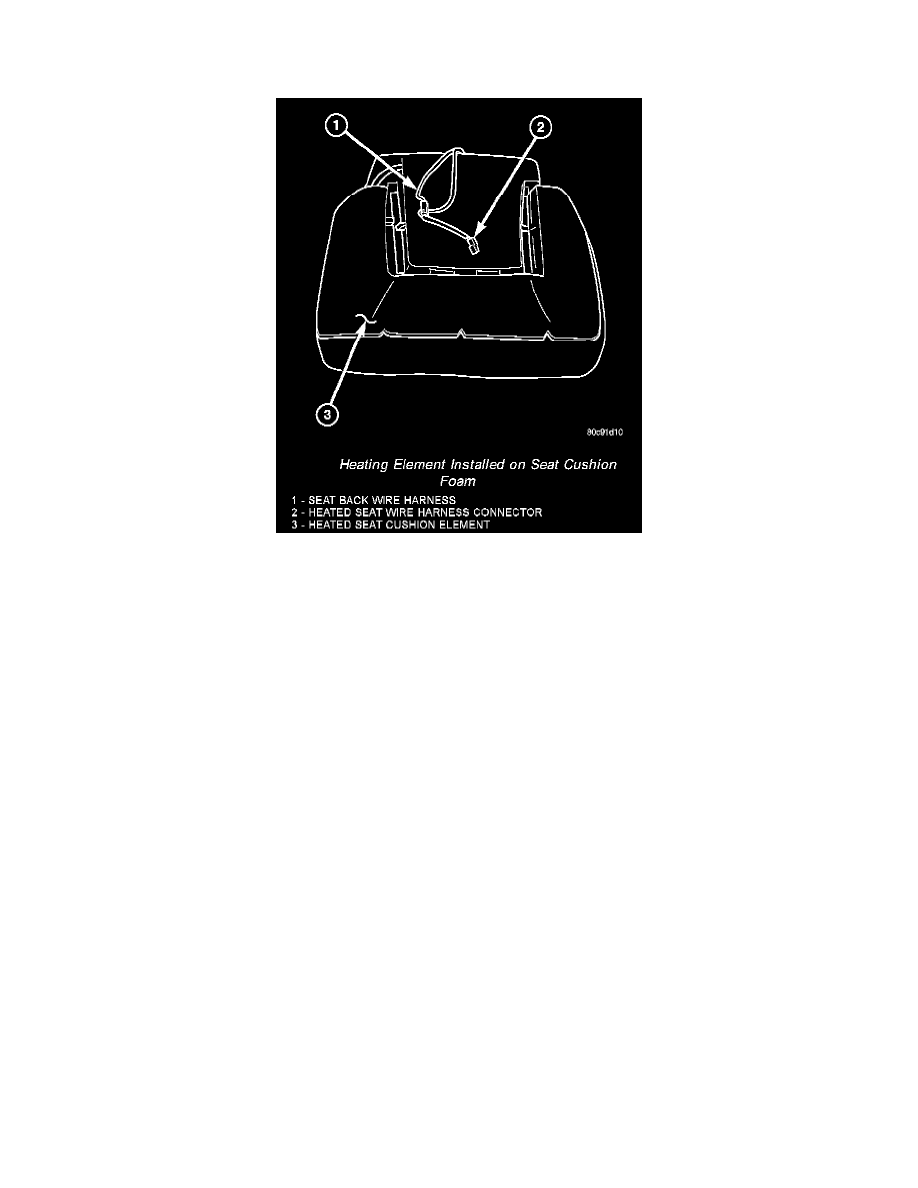RAM 2500 Truck 2WD V8-5.7L VIN D (2004)

Seat Heater: Description and Operation
Heated Seat Element
Heating Element Installed On Seat Cushion Foam
Vehicles equipped with the optional heated seat system have two sets of electrically operated heating element grids located in each front seat, one set for
the seat cushion and the other set for the seat back. Each of the heated seat element grids consists of a single length of resistor wire that is routed in a
zigzag pattern and captured between a covering and the adhesive foam rubber backing. Short pigtail wires with connectors are soldered to each end of
each resistor wire element grid, which connect all of the element grids to the heated seat module through the seat wire harness.
One temperature sensor is used for each front seat, and it is located in the center insert area of the seat cushion element. The heated seat sensors and their
pigtail wires are also captured between a covering and the adhesive foam rubber backing. The heated seat sensors are Negative Thermal Coefficient
(NTC) thermistors. The sensors for both front seats receive a voltage feed from a single output of the heated seat module, but the module receives
individual sensor inputs from the driver side and passenger side sensors.
The heated seat elements and sensors should not be repaired. If damaged or faulty, the heated seat element assembly must be replaced.
One end of the heated seat element resistor wire is connected to ground at all times through a splice in the heated seat module ground circuit. Battery
current is directed to the other end of the heated seat element resistor wire by the energized N-channel Field Effect Transistor (N-FET) located within the
heated seat module. The heated seat module will energize the N-FET only when the heated seat switch is in the Low or High position and the heated seat
sensor indicates that the seat cushion surface temperature is below the selected (Low or High) temperature set point. As electrical current passes through
the heating element grid, the resistance of the wire used in the element disperses some of that electrical current in the form of heat. The heat produced by
the heated seat element grid then radiates through the seat trim cover, warming its occupant.
The resistance of the heated seat sensor increases and decreases as the surface temperature of the seat cushion cover changes. The heated seat module
supplies each sensor with a 5v voltage feed, then uses the sensor resistance to determine when the heated seat element grids need to be cycled on or off in
order to maintain the selected temperature set point.
